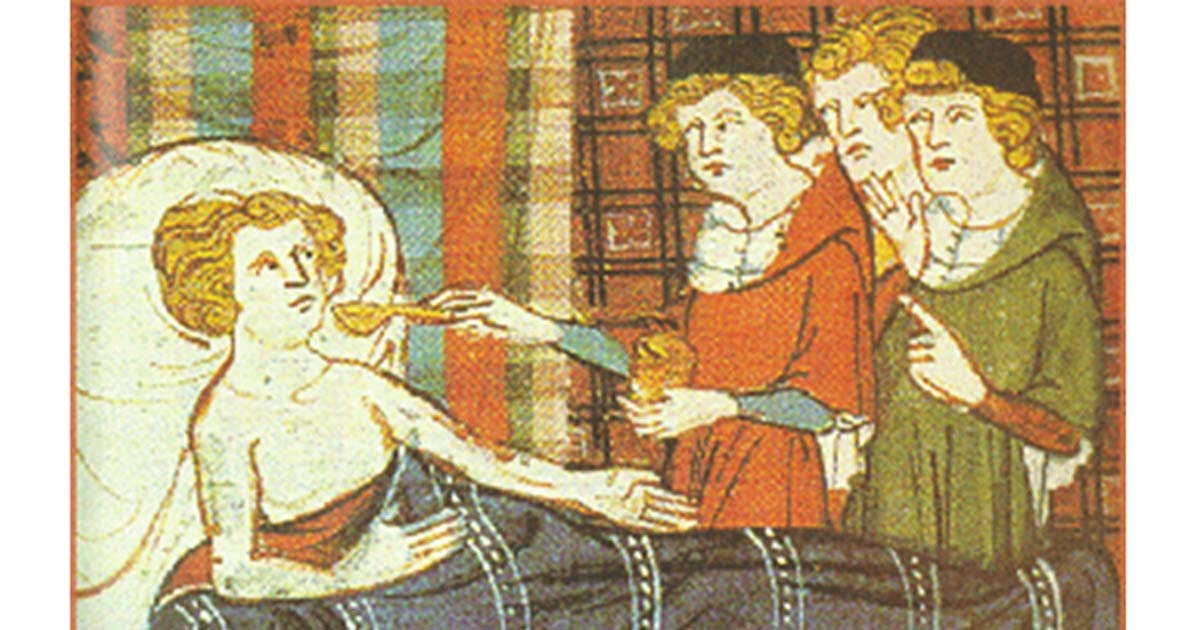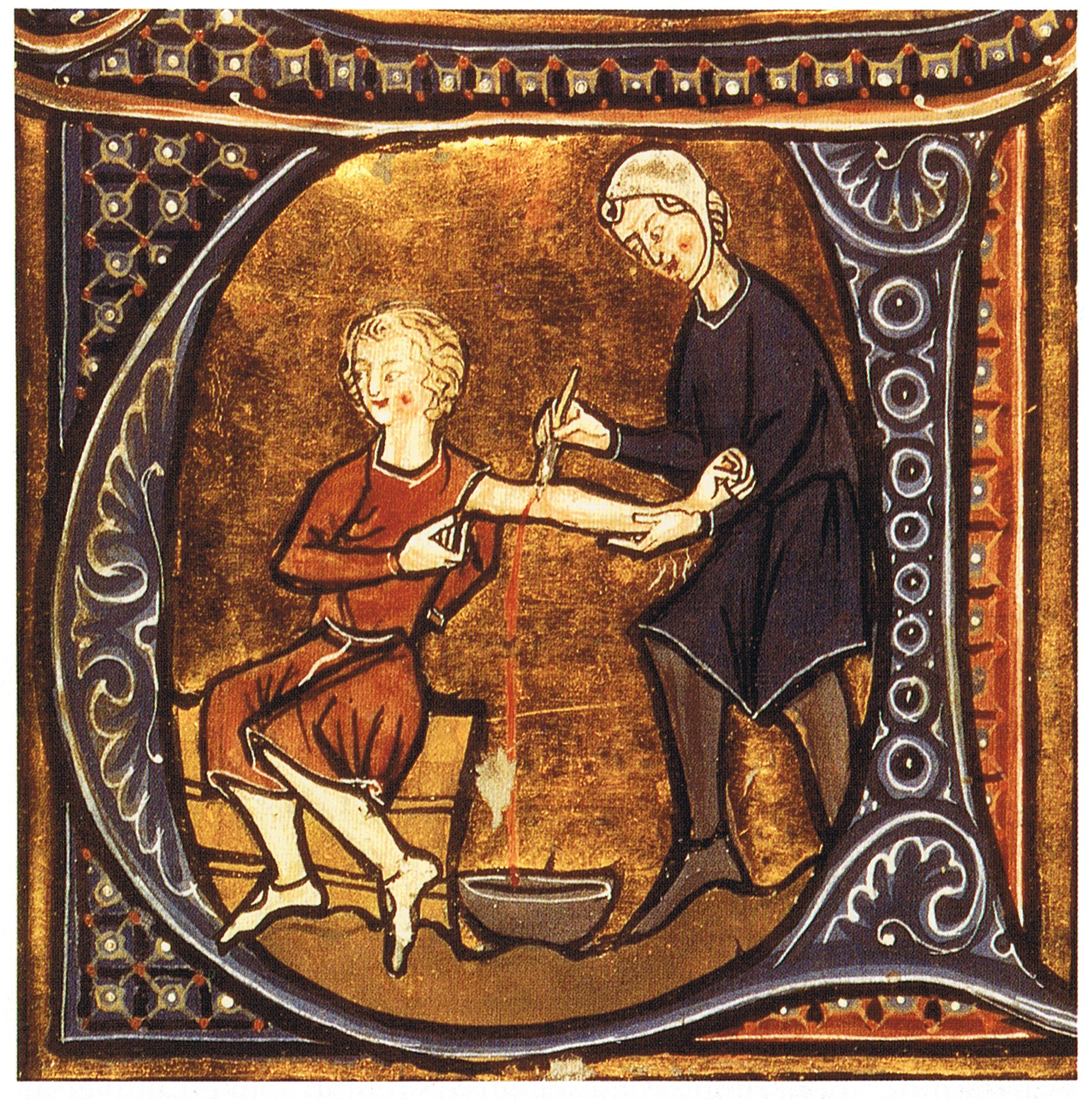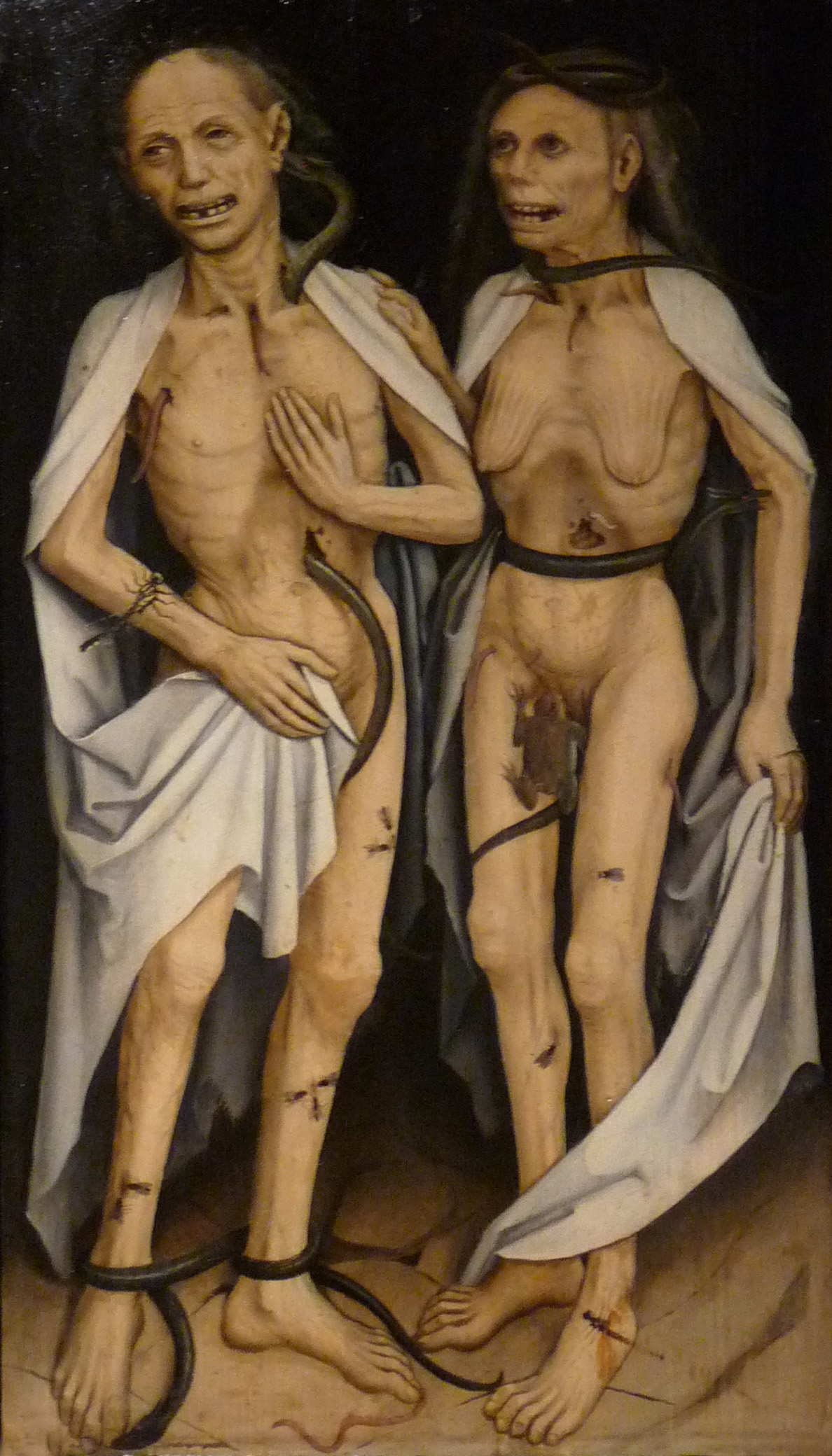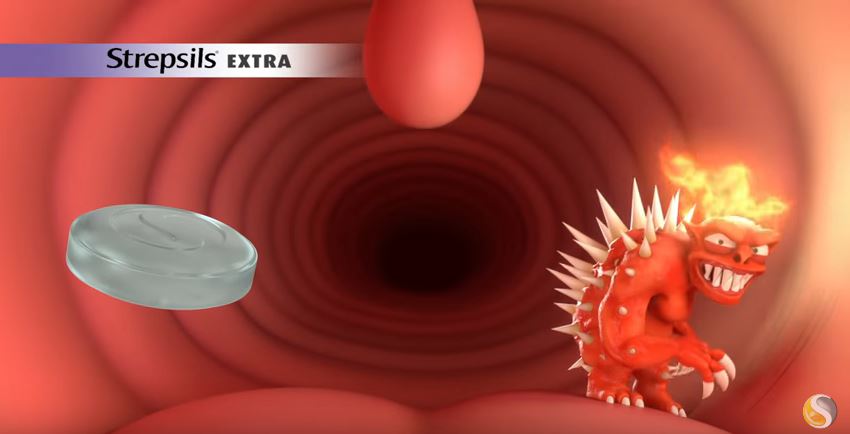Worms, Corruption, and Medieval Detoxing
Laxatives, bloodletting, vomiting - medieval medicine was very preoccupied with purging the human body. And with reason, as little animals might be living inside of us...
Purging the body back to health
The desire for a healthy body has led many people into the world of detox. According to the theory of “detoxification” or “body cleansing”, the human intestines are like a sewage system that has to be cleansed every once in a while for it not to turn into a cesspool full of toxic substances that will ultimately make you sick. Although scientists and health organizations constantly reemphasize the unscientific basis for the theory of detoxification and the lack of proof for the effectiveness of its methods, the idea that it may be possible to cleanse your body still has a wide appeal. Purging the body by fasting, a diet of “superfood juices” or even a colon cleansing helps people deal with the fear that the food that we eat, and of which we are no longer sure of the origins, might actually make us sick.
The current detoxification industry, focused on removing “toxins” like artificial food ingredients and pesticides, has been disproved as a pseudo-science. But until not very long ago, the idea that it was necessary to purge the body in order to stay healthy was a part of regular medical science. Before the advent of modern medicine, traditional medical theory was based on the ideas of the ancient Greek philosopher Galen. The human body was thought to consist of four bodily fluids called “humors”: blood, phlegm, black bile and yellow bile. An imbalance of these humors, for instance caused by an improper diet, could result in diseases. A regiment of health imposing a different diet, sleep or exercise, could be a solution. But apart from this, many purging methods were imposed as well, to expel the corrupt humors from the body. The most familiar of these is bloodletting, with leeches or otherwise. Laxatives and vomit inducing medicines were also very popular. Pale and empty-stomached, the patient would be effectively purged of his disease.

The casebook of a Florentine doctor
Although we might associate fifteenth century Italy with the advent of modern anatomical science (think for instance of the dissections carried out by Leonardo da Vinci), the medical system based on humoral theory was still very much in place. A good sense of the workings of this system can be grasped from a casebook of the Florentine doctor Antonio Benivieni (1443-1502). Over the fourteenth and fifteenth centuries, it had become a widespread practice for doctors to record the remarkable cases they claimed to have encountered during their medical practice. Benivieni has left a collection of some 150 of these case studies in a work called De abditis nonnullis ac mirandis morborum et sanationum causis (“On some hidden and remarkable causes of disease and recovery”). In these stories we come across patients suffering from all kinds of diseases, of whom most are cured through the standard procedure of bloodletting, laxatives and vomit-inducing medicines. One man from Siena who was suffering from memory loss after a long period of illness, finally recovered his memory, after having excreted “all kinds of filth, blood, green bile, and slimy excrement”. Ailments ranging from a very troublesome cough to a diseased liver are cured simply by tapping some blood.
That these “healing methods” of inducing vomit and bloodletting were not at all without danger, becomes clear from the many cases recalled by Benivieni of patients dying from losing too much blood or much too strong purgatives – obviously while being treated by other, less capable physicians.

Physician letting blood from a patient. British Library, London. Aldobrandino of Siena: Li Livres dou Santé. France, late 13th Century. Source: Wikimedia Commons.
The human body as a sack full of worms
As Benivieni’s case book shows, the human body was thought to be full of putrefied, disgusting matter, that needed to be expelled. The full extent of this view of the human body is beautifully described by the Italian historian Piero Camporesi in his book La carne impassibile (1983) [The incorruptible flesh]. According to the early modern world view, the human body was nothing but a sack of worms, a symbol of its sinfulness and moral corruption. The most perfect example of the rotting and decaying interior of the human body, was the fact that all types of vermin were believed to generate from it. Snakes were said to be formed from the spinal marrow of corpses, toads might spontaneously emerge from menstrual blood, and all types of vermin, especially worms and worm-like creatures might take shape within the putrefied intestines of the human body.
The frightful idea that animals may be living inside of us is clearly visible in Benivieni’s many medical cases of patients suffering from worms in all matters and forms. Young children are so troubled by intestinal worms, that they are unable to sleep, “continuously tossing this way and that in wild uncontrolled movements”. After having been given a laxative medicine of aloe, myrrh and saffron, the 7 year old son of a butcher finally recovered after evacuating a grand total of 148 worms. The bodies of adult males house even scarier types of worms. A 40 year old carpenter called Giovanni had been seriously troubled for two years by an almost incessant pain in the heart. Many physicians had tried to help him, but none could, until he went to Benivieni, who decided that he must be suffering from “some malignant and injurious matter lodged in the stomach” and gave him some vomit-inducing potion. During the second treatment, the doctor witnessed how
thicker phlegm was thrown up and with it a worm quite four fingers long, rather fat, with a smooth, round, red head no bigger than a pea and a forked tail shaped like the moon, the rest of the body being hairy. It went on four feet, two joined together on the right side of the body and two on the left. Surprised at the worm’s shape I showed it to physicians more learned than I, but none had seen such a monstrosity.
An even more frightful case is that of Benivieni’s friend Filippo, who suffered from a very serious type of headache of the kind that “dims the vision, drives the mind crazy, excites vomiting, and causes loss of voice”. No remedies were to any avail, until finally, “by the powerful aid of nature, he ejected a worm from his right nostril longer than the palm of his hand”.
Nor was Benivieni the only Italian doctor worried about bodily worms. Pietro Bairo (1468-1558), professor of medicine at the University of Turin, mentioned a number of methods to get rid of worms inside the body in his Secreti Medicinali. Some of these are intestinal worms, divided into different categories, such as “lombrichi” [earthworms] and “cocurbitini” [tapeworms], and should be treated with decoctions made from ingredients such as sweet pomegranate or the horn of a stag. Other “secret remedies” are meant to expel worms from other parts of the body. For instance, dripping the juice of wormwood into the ears may help to drive out the worms that are thought to live there.

The decayed human body, attacked by vermin. Mathias Grünewald, The Dead Lovers (ca. 1470). Source: Wikimedia Commons
Parasites and pain management
How can we explain all these many references to worms and other animals living inside and harming the human body? At least part of the explanation lies in the study of (intestinal) parasites. Much information on the distribution of these parasites has been gathered during archeological research of medieval and early modern latrines, revealing a great quantity and variety of parasites. In premodern Europe, parasites were a much bigger part of human life, due to different cooking practices, different levels of hygiene, and the fact that many people still lived in close proximity to animals. Drinking polluted water may easily have been the cause of many intestinal worms, as is the case in the following story by Benivieni:
I saw a woman in the Avinonian baths in the Sienese territory, who drank the waters for seven days on end, and then ejected a great many worms of the kind which the physicians call cucurbitini because they are like melon seeds. These worms were all joined together, hanging on to one another by their teeth. As their chain was more than four cubits long it looked like one body and only one worm.
Although actual parasites might attest for intestinal worms or even worms inside the nose or ears, the appearance of other animals inside the human body can be more difficult to explain. This is the case with Pietro Bairo’s recipe on “how to catch worms that are within the teeth”. If someone is suffering from a toothache, Bairo advises them to place some herbal or mineral mixture inside the cavities, which will help against “the corruption of the teeth” and will kill the worms that live inside them. In this particular case, reducing the abstract pain of corrupted teeth to the more “tangible” notion of a small creature causing the discomfort, might have helped people to cope with that pain, and feel less powerless.
Although this might seem a rather strange coping mechanism, it is not at all unlike our modern commercials for pharmaceutics, which often represent pain in the shape of little monsters or demons attacking the insides of our throats or stomach with claws or tiny pickaxes.

Pain due to a sore throat represented as a tiny monster attacking the inside of the body. Source: Commercial of a pharmaceutical company, still from a YouTube video.
References and further reading:
Piero Camporesi, La carne impassibile (Milan 1983).
Piers D. Mitchell ed., Sanitation, Latrines and Intestinal Parasites in Past Populations (Burlington VT 2015).
© Marlisa den Hartog and Leiden Medievalists Blog, 2018. Unauthorised use and/or duplication of this material without express and written permission from this site’s author and/or owner is strictly prohibited. Excerpts and links may be used, provided that full and clear credit is given to Marlisa den Hartog and Leiden Medievalists Blog with appropriate and specific direction to the original content.


